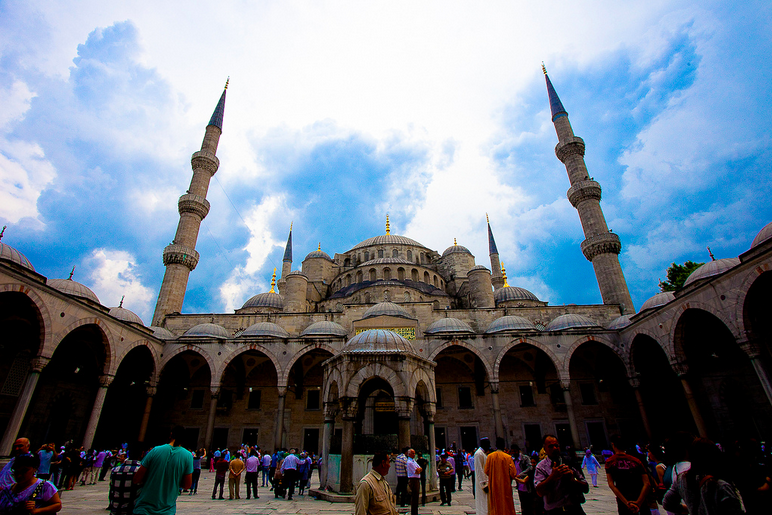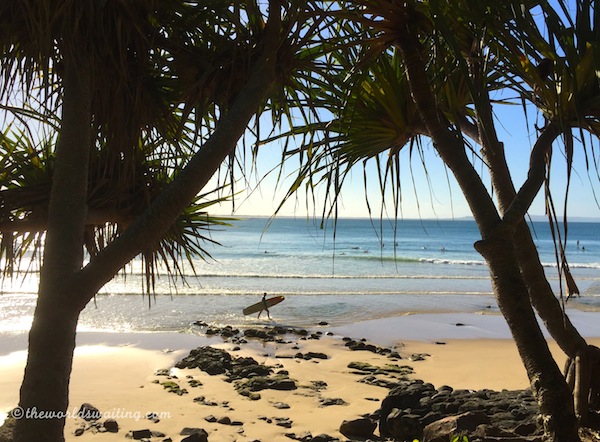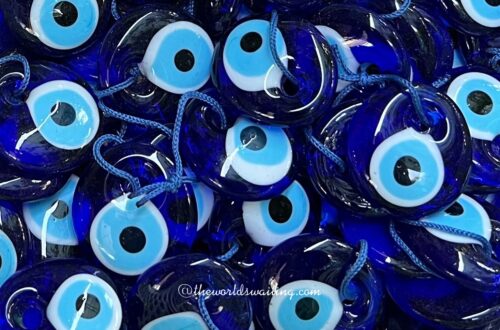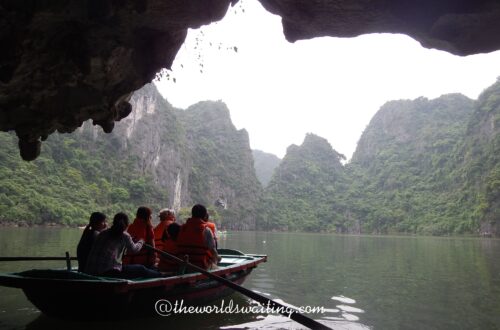
Kek Lok Si – South East Asia’s largest Buddhist Temple
As well as the colours making it a photographer’s dream destination, Kek Lok Si Temple is one of the most beautiful, unique and peaceful places you can visit in bustling Penang. Perched on a quiet hilltop, this fascinating temple harmoniously blends two forms of Buddhism with traditional Chinese beliefs, and is said to be the largest Buddhist temple in South East Asia. The result is a quiet place of worship covered in stunning artwork. It is definitely worth visiting when you are in Penang.
The history of Kek Lok Si Temple
Constructed between 1890 and 1930, thanks to generous donations from five wealthy Chinese merchants, Kek Lok Si is still being developed by the existing Chinese community and is the most beautiful example of a ‘work in progress’ I have ever seen. Somehow, despite the continuing building works, the grounds remain calm and fascinating to visit, without being noisy, dusty or dirty.
Kek Lok Si Temple is an important centre of pilgrimage from Buddhists across South East Asia. The temple was founded by the Chief Monk at the Goddess of Mercy Temple on Pitt Street, Yeoh Siew Beow, who became the temple’s first Abbott. The sprawling complex consists of several large prayer and assembly halls, pagodas, statues of Buddha, statues of Chinese gods and Boddhisattvas, gardens and ponds across two main levels. Having made it through the hawkers outside, visitors enter the temple complex at the Pagoda Level.
Pagoda of 10,000 Buddhas
The temple’s main pagoda, the Temple of 10,000 Buddhas, does what it says on the tin. The pagoda is over 30 metres tall and seven storeys high. It has three main tiers, starting with a Chinese octagonal base. The middle section is built in Thai style and the pagoda is topped with a golden Burmese spiral dome. This combination symbolises the ethnic and religious diversity of the temple, which blends Mahayana and Theravada Buddhism with Chinese beliefs. The ornate, but plain white, exterior walls of the pagoda keep secret the amazing colours on the inside. Visitors entering the pagoda are greeted by 10,000 Buddha statues and images spread across the seven different levels. You can climb the narrow and steep staircase to the top (mind your head!), from which there is a magnificent view across the temple complex, and to the sea. The pagoda is also known as the Pagoda of Rama VI, on account of the Thai king laying the pagoda’s foundation.

Prayer and Assembly Halls at Kek Lok Si
The temple features numerous large and intricately decorated prayer halls. The halls provide a quiet place for worshippers to assemble and pray. Cauldrons holding incense sticks often waft smoke outside the halls.

Inside, offerings are left before large statues of Buddha or Chinese gods. Ornately carved pillars, colourful examples of skillful woodwork and spectacular paintings and carvings on the walls and ceilings make each prayer hall a work of art. Visitors are permitted but asked to be respectful, remove their shoes and keep quiet.

Temple Gardens
The different sections of the complex are connected by walkways through beautifully landscaped and colourful little gardens. There are also several stalls along the way that sell offerings and souvenirs. Free books about Buddhism are available at a few stands, if you wish to learn more.

Kuan Yin Level
The upper level of the complex can be reached by cable car for a few dollars. It is worth visiting to see the various statues. Visitors can also try a vegetarian meal and enjoy the view across the temple and over to the sea.

Kuan Yin Statue
A vast 30 metre bronze statue of the Goddess of Mercy, Kuan Yin, which is apparently the tallest in the world, stands at the highest point of the temple. The bronze statue was completed in 2002, following a fire that destroyed the original. This area is where work continues. An enormous 16-column pavilion structure is being built over the statue, and further smaller statues are planned.

Chinese statues at Kek Lok Si
Other statues on this level of the complex include four Chinese Heavenly Kings, each of which is said to control a compass point. There are also 12 animal statues representing the symbols of the Chinese zodiac.

Liberation Pond
Liberation Pond is so-named following the Chinese tradition of releasing captured turtles to their freedom, as a symbol of spiritual liberation. The pond is home to several turtles (that may dispute the name) and there is a small pavilion in the centre of the pond from which you can watch them.

Useful information when visiting Kek Lok Si Temple
- Kek Lok Si Temple is open daily from 8.30am – 5.30pm, and sometimes longer. It is especially busy at Chinese New Year and during the 30 days that follow.
- Entry is free, but there is a charge of a few dollars to use the cable car to the upper level.
- It is a place of worship and appropriate clothing should be worn.
- Comfortable shoes are essential as it is a large complex. Slip-ons are most convenient when accessing the prayer halls (and needing to remove shoes).
- The temple is about 3 kilometres from the Penang Hill Station, near Air Itam. From Georgetown you can take the bus to Air Itam, or a taxi.




